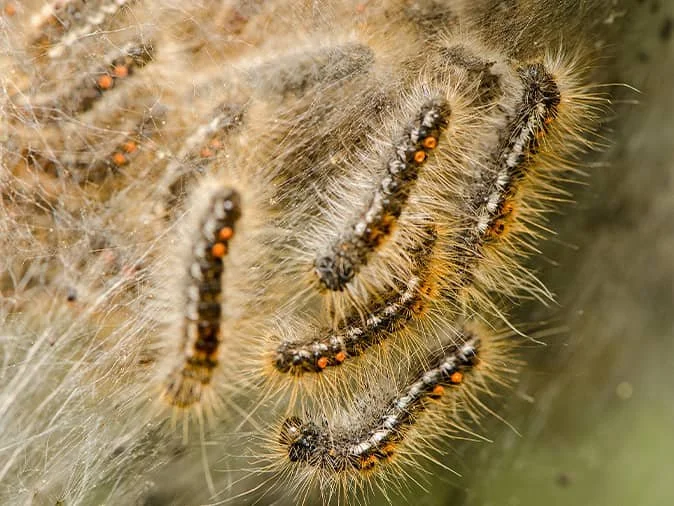Preventing & Treating Browntail Moths In Maine
Browntail moth caterpillars continue to be a significant problem in Maine. So much so, that the Maine Forest Service spent the month of February raising awareness about these pests and encouraging property owners to knock down winter webs on their property in an effort to reduce the impact these caterpillars have on host tree populations and the individuals who are exposed to their toxic hairs.
A little history on browntail moths in Maine
Browntail moths haven’t always been a problem here in Maine but they have been pestering us for over 100 years now. Check out the timeline below to see the how the BTM population has increased and decreased since they were first identified.
According to the Maine Department of Agriculture, Conservation & Forestry, browntail moths (or BTMs) were accidently introduced into neighboring Massachusetts in 1897.
By 1913, they had spread throughout New England and into parts of Canada.
The browntail moth population collapsed in the 1920s in part to natural controls including weather and the fungus, Entomphaga aulicae.
BTM populations were confined to Cape Cod, MA and a few islands off Maine’s coastline in Casco Bay
In 1988, the population on Little Diamond Island began expanding and their numbers continued to rise in the years following.
By 1999, browntail moth activity was found from Kittery to Augusta to Gouldsboro and in some cases inland.
In 2004-2005, cool wet springs, lack of feeding, fungal disease, and parasitoids and predators resulted in the crash of the population but a remnant remained in Brunswick.
In 2010, these pests were identified in Falmouth, Turner, and Kennebunk
In 2015, the state of Maine experienced yet another outbreak of BTMs and since then, the populations have continued to increase.
An aerial survey completed in 2021 showed almost 200,000 acres of damage caused by browntail moths in Maine.
What will the 2022 browntail moth population look like?
Experts at the Maine Forest Service are anticipating encounters with browntail moths and their toxic hairs to be as bad or worse than last year.
What you can do now to prevent browntail moth caterpillars from taking over your property this spring
You know the saying, “the best defense is a good offense”? When it comes to fighting browntail moths, we couldn’t agree more and that’s why we, and the Maine Forest Service, are encouraging Maine residents (especially the ones in high-risk areas like Androscoggin, Kennebec, Knox, and Sagadahoc counties) to knock down browntail moth winter webs before the caterpillars hatch.
How to kill winter webs
For detailed instructions on how to safely remove browntail caterpillar nests in trees, please watch this video that the Maine Forest Service released.
What to do if you find browntail moth caterpillars on your structure
Even if you were able to find and destroy winter webs on your property over the winter, don’t be surprised if BTM caterpillars show up on your home and property this spring. It’s impossible to destroy every. single. web. The good news is that there is help!
At Advanced Pest Solutions, we provide targeted browntail moth treatments for structures and actually recommend calling us for service BEFORE they hatch in May. For more information or to schedule your spring browntail moth control service, please contact us today.

